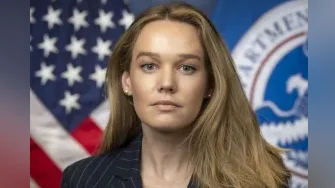The Congressional Record is a unique source of public documentation. It started in 1873, documenting nearly all the major and minor policies being discussed and debated.
“THE INTERMODAL SURFACE TRANSPORTATION EFFICIENCY ACT” mentioning the U.S. Dept of State was published in the Senate section on pages S1815-S1816 on March 12, 1998.
The publication is reproduced in full below:
THE INTERMODAL SURFACE TRANSPORTATION EFFICIENCY ACT
Mr. KERREY. Mr. President, I would like to commend my Democrat and Republican colleagues for their hard work in creating a transportation bill that will reduce traffic congestion, make our roads safer, and protect the U.S. environment. ISTEA, the Intermodal Surface Transportation Efficiency Act, is one of the most important items on the legislative agenda of the 105th Congress.
The American people deserve nothing less than a world-class transportation system that will facilitate economic growth and improve transportation safety. This bill achieves that goal in a fair manner and guarantees that America's transportation infrastructure will be vital well into the next century.
ISTEA is an investment in people and in communities. The Nation's transportation systems move $6 trillion worth of goods every year. Behind every one of the products that makes up that $6 trillion stands a hard-working person pursuing the American dream. ISTEA will create jobs and add to the productive capacity of our workers and the economy by enabling businesses to market their products quickly and efficiently. The American people have challenged us to provide infrastructure that can meet the transportation needs of one of the strongest economies of the world. With this bill, we are meeting their challenge by providing them the sources necessary to create and maintain the transportation infrastructure that will keep America strong.
One of my top transportation priorities has been improving safety on America's roads and highways. Mr. President, 41,000 Americans are killed every year in traffic accidents. We can reduce this horrifying number by concentrating our resources on high-risk roads and dangerous intersections. We know, for example, that rural two-lane roads account for more than half of all traffic and nearly three-quarters of traffic fatalities. Better engineering and planning can reduce the accidents that repeatedly occur on these dangerous roads.
I introduced several amendments to address this very serious problem. The first amendment systematically makes safety a priority consideration in highway construction and maintenance programs. This language sends a strong message to Federal, State, and local transportation planners that they need to focus on enhancing safety. The second amendment establishes a two-lane highway safety program to begin systematic reconstruction of rural two-lane arterial highways that are not a part of the National Highway System.
Mr. President, I intend to speak at greater length on this when the opportunity comes to offer this amendment. It has not yet been accepted. I understand that it can be controversial because of the need to shift money from one area to another. Given the numbers of traffic fatalities on these roads, there are literally lives hanging in the balance. We have created a strong Interstate and National Highway System. It is now time to take the next step in completing this by improving the dangerous two-lane arterial roads that carry traffic to the National Highways and Interstate Highway Systems.
In addition, I authored two amendments to address the very serious problem of accidents at railway crossings. I am pleased to report the Senate accepted both of these amendments. These provisions focus attention on reducing accidents by making highway rail-crossing improvement projects eligible for funds through the Intelligent Transportation Systems Program and the Innovative Bridge Research Program.
In 1996 alone, there were 4,257 highway-rail crossing collisions that resulted in 488 deaths and over 1,600 injuries. These incidents are mostly preventable if adequate safety precautions are taken. As the volume of rail traffic continues to increase, dedicating funds to these dangerous crossings will help ensure the number of accidents is reduced. The Senate took a strong step towards reducing these collisions by accepting these amendments, and I strongly encourage the House to place a similar emphasis on highway-rail crossing safety when they consider ISTEA in the coming weeks.
Mr. President, I also appreciate very much the strong vote given on this floor to extending the ethanol credit. But mostly I applaud the leadership of Republicans and Democrats who understand the importance of ISTEA to the American economy and the American environment and to those hard-working Americans who are pursuing the American dream.
Mr. President, I ask unanimous consent to have printed in the Record an article from the Omaha World-Herald dated February 26, 1998.
There being no objection, the article was ordered to be printed in the Record, as follows:
Congress Must Unlock Roads Funds
Have you ever been in a financial situation in which
``robbing Peter to pay Paul'' was the only way to get through the crisis? One of Nebraska's largest agencies is currently in this situation, and it's an agency from which we all benefit--the State Department of Roads.
As a result of Congress' failure to reauthorize a multi-year federal highway bill known as the Intermodal Surface Transportation Efficiency Act, repairs on dilapidated bridges, safety improvements on high-risk roads and major construction projects are being forced to wait in limbo. The Nebraska Department of Roads has had to borrow from the state reserve fund to provide temporary relief.
What's truly unfortunate about this situation is that the money we need for this year's construction season is sitting in an account waiting for congressional leaders to approve reauthorization of the ISTEA. Without its passage, the Nebraska Department of Roads will be powerless in executing many of its long-range plans for roadway improvements.
The temporary extension of the highway funding bill is due to expire on March 31, leaving little time for legislators to agree on a spending formula which will ensure its passage.
How will failure to pass this legislation affect motorists in Nebraska? It already has disrupted Nebraska's ability to plan, solicit project bids and approve contracts. Uncertainties about funding may cost hundreds of Nebraska workers their jobs.
With Nebraska's short road construction season, it's imperative that funding be designated now or projects will have to wait until next year where they will overlap with 1999's plans. Such overlapping will likely increase traffic congestion, put motorists at a greater safety risk and create shortages in manpower for construction crews.
Failure to pass this bill has also placed many safety programs in jeopardy. Programs benefiting infants through senior adults will be lost because Nebraska will lose
$600,000 in grant funds tied to this bill. Law enforcement agencies will not receive 150 in-car video cameras and will lose funding for 4,200 man-hours of traffic enforcement in hazardous locations. Child safety seat loaner programs will have 400 fewer units to lend.
* * * * *
AAA Nebraska is urging Congress to act quickly on the reauthorization of the Intermodal Surface Transportation Efficiency Act, including the passage of the Byrd-Gramm Amendment which will increase roadway investments about 2 percent if budget surpluses are realized this year.
A Senate speech by Nebraska Sen. Bob Kerrey is quoted in the Feb. 5 Congressional Record: ``For me, ISTEA legislation is one of the most important things with which this Congress deals. It creates immediate jobs, employs people in my state, but much more importantly, it adds to the productive capacity out in the future.''
AAA encourages Senator Kerrey to continue to fight for passage of this important legislation and urges our other congressional leaders representing us in Washington to do the same. Nebraska is counting on it.
The PRESIDING OFFICER. The Senator from Virginia.
Mr. WARNER. Mr. President, parliamentary inquiry as to the next order of business. My understanding is we go to the bill at 10:30, at which time the McCain amendment is the pending business without debate?
The PRESIDING OFFICER. The Senator is correct.
____________________







